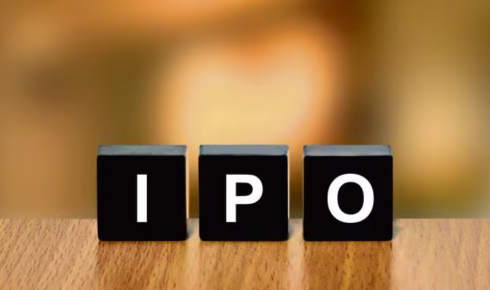In the world of investing, identifying a profitable IPO can be a game-changer. This article delves into the differences between mainboard and SME IPOs, offering insights on how to spot potential winners. HDFC SKY, the discount-broking platform by HDFC Securities, provides the tools and research needed to navigate the IPO market effectively.
Understanding Initial Public Offerings (IPOs)
Initial Public Offerings (IPOs) are a significant event in the life cycle of a company as it marks the first time the company offers its shares to the public for investment. It is a process through which a privately-held company transitions into a publicly-traded entity by selling its shares to institutional and retail investors. When a company decides to go public through an IPO, it hires investment banks to underwrite the offering and help determine the initial share price. Investors interested in participating in an IPO can submit their bids through a broker during the subscription period. IPOs provide a unique opportunity for investors to invest in a company in its early stages of growth and potentially benefit from the potential increase in share value as the company expands and matures.
Mainboard IPO refers to the process where larger companies list their shares on the primary stock exchange. This involves extensive regulatory compliance and disclosure to ensure transparency and protect investors’ interests. Launching a mainboard IPO signifies a company’s maturity and readiness to expand its market presence and attract substantial capital investment.
Investing in IPOs requires thorough research and understanding of the company’s fundamentals, market conditions, and industry trends. Investors should carefully analyze the company’s financial statements, business model, competitive landscape, and growth prospects before making an investment decision. It is essential to consider factors such as the company’s management team, revenue and profit growth, market demand for its products or services, and potential risks associated with the investment. Additionally, investors should assess the valuation of the IPO to determine whether the offering price is reasonable based on the company’s financial performance and future outlook. By conducting due diligence and seeking expert advice, investors can make informed decisions when participating in IPOs and potentially benefit from capital appreciation over the long term.
Key Differences Between Mainboard and SME IPOs
Mainboard IPOs and SME IPOs differ in several key aspects. One significant difference lies in the size of the companies going public. Mainboard IPOs are for well-established companies with a larger market capitalization, often seeking to raise substantial funds for expansion or strategic initiatives. On the other hand, SME IPOs cater to small and medium-sized enterprises looking to access the capital markets to fund growth opportunities or meet specific financial objectives. The eligibility criteria and regulatory requirements for listing on the mainboard are typically more stringent compared to SME exchanges, reflecting the varying levels of risk and investor protection associated with each segment.
Another notable distinction between Mainboard and SME IPOs is the level of market exposure and investor visibility. Companies opting for a mainboard IPO gain access to a broader investor base due to the higher liquidity and visibility associated with major stock exchanges. In contrast, SME IPOs provide a platform for relatively smaller companies to raise capital from a specialized group of investors interested in supporting the growth of emerging businesses. While mainboard IPOs offer greater prestige and market recognition, SME IPOs cater to companies at an earlier stage of development, offering them a stepping stone to access public markets and expand their investor base gradually.
Upcoming IPO 2025 trends indicate a continued diversification in offerings, with both Mainboard and SME segments poised for significant activity. As market conditions evolve, companies will likely assess their strategic goals to determine the most beneficial route for listing, balancing the broad exposure of Mainboard IPOs with the niche appeal of SME offerings.
Factors to Consider When Evaluating IPO Opportunities
When evaluating IPO opportunities, there are several crucial factors to consider to make an informed investment decision. Firstly, understanding the company’s business model, growth prospects, and competitive landscape is essential. Investors should assess the company’s financial health, revenue streams, profitability, and market positioning. Conducting thorough research on the industry trends, target market, and potential risks can provide valuable insights into the company’s future performance. Additionally, evaluating the management team’s experience, track record, and vision is crucial in determining the company’s ability to execute its growth strategy effectively.
Another significant factor to consider when evaluating IPO opportunities is the valuation of the company. Investors should analyze the IPO price in relation to the company’s earnings, growth potential, and comparable companies in the industry. Understanding the pricing dynamics and market demand for the IPO can help investors gauge the potential upside and risks associated with the investment. Furthermore, considering the timing of the IPO and overall market conditions is important to assess the potential market reception and investor sentiment towards the offering. By carefully evaluating these factors, investors can make well-informed decisions when considering IPO opportunities such as HDFC SKY offered by HDFC Securities.
Assessing the Market Potential of Mainboard IPOs
Assessing the market potential of mainboard IPOs, such as HDFC SKY by HDFC Securities, involves a comprehensive analysis of various factors. Firstly, understanding the target market and investor demographics is crucial. In the case of HDFC SKY, the modern discount-broking platform targets both seasoned traders and beginners by offering a user-friendly interface, expert research, and seamless access to a wide range of investment options. Evaluating the competitive landscape is another key aspect of assessing market potential. In the case of HDFC SKY, factors such as zero account-opening charges, flat brokerage rates, and value-added services like interest-bearing margin trading set it apart from other players in the market, making it an attractive option for potential investors.
Moreover, analyzing market trends and economic indicators can provide insights into the demand for mainboard IPOs like HDFC SKY. Factors such as the overall performance of the stock market, interest rates, and investor sentiment can influence the success of an IPO. Conducting a thorough SWOT analysis can help identify the strengths, weaknesses, opportunities, and threats associated with the IPO, enabling a more informed assessment of its market potential. By considering these factors and conducting market research, companies can make informed decisions about launching mainboard IPOs and maximize their chances of success in the competitive investment landscape.
Analyzing Growth Prospects in SME IPOs
Analyzing growth prospects in SME IPOs is a crucial aspect of investment strategy, especially for retail investors looking to diversify their portfolios. HDFC SKY, offered by HDFC Securities, presents a unique opportunity for investors to tap into the potential growth of small and medium-sized enterprises through initial public offerings. SME IPOs can offer attractive returns for investors willing to take on some level of risk, as these companies have the potential for significant expansion and value appreciation. By leveraging the expert research and intuitive tools provided by HDFC SKY, investors can make informed decisions on which SME IPOs to invest in, based on factors such as industry trends, financial performance, and growth projections.
Tata Steel share price fluctuations can significantly influence portfolio valuations and require investors to stay informed. This awareness complements the strategy of exploring SME IPOs, as both avenues present diverse opportunities for portfolio enhancement. Investors are advised to conduct thorough research and adopt a balanced approach for optimal risk management.
Moreover, HDFC SKY’s zero account-opening charges and flat brokerage fee per order make it an accessible and cost-effective platform for retail investors to participate in SME IPOs. The interest-bearing margin trading feature further enhances the potential for investors to maximize their returns by leveraging their investment capital. With a wide range of investment options available, including equities, ETFs, mutual funds, derivatives, commodities, currencies, and global stocks, investors can diversify their portfolios and capture growth opportunities in various market segments. Overall, by utilizing HDFC SKY’s comprehensive suite of services, investors can analyze and capitalize on the growth prospects of SME IPOs to achieve their financial goals.
Risks and Rewards of Investing in IPOs
Investing in Initial Public Offerings (IPOs) can offer both risks and rewards for investors. One of the main rewards of investing in IPOs is the potential for significant returns. Being able to get in on the ground floor of a company before it becomes publicly traded can result in substantial gains if the company performs well post-IPO. Additionally, IPOs often generate a lot of excitement in the market, leading to a potential increase in stock price due to high demand. This can be enticing for investors looking to capitalize on short-term gains. Moreover, investing in IPOs allows investors to diversify their portfolios and access new investment opportunities that may not have been available before.
On the flip side, investing in IPOs also comes with inherent risks. One major risk is the uncertainty surrounding the future performance of the company. While some IPOs may see immediate success, others may struggle to maintain their initial momentum. This uncertainty can make it difficult for investors to accurately gauge the long-term viability of the company, potentially leading to losses. Additionally, IPOs can be volatile, with prices fluctuating significantly in the early stages of trading. Investors need to be prepared for this volatility and have a high-risk tolerance when investing in IPOs. Conducting thorough research and due diligence is crucial to mitigate these risks and make informed investment decisions in the IPO market.
Financial Performance Metrics for IPO Evaluation
Financial performance metrics play a crucial role in evaluating the potential success of an Initial Public Offering (IPO) such as HDFC SKY by HDFC Securities. These metrics provide valuable insights into the company’s current financial health and future growth prospects. Key metrics that investors and analysts often consider include revenue growth rate, profit margins, return on equity (ROE), earnings per share (EPS), and cash flow. A strong revenue growth rate is indicative of the company’s ability to generate increasing sales over time. Profit margins reflect the efficiency of the company’s operations and its ability to generate profits. ROE measures how effectively the company is utilizing shareholders’ equity to generate profits, while EPS provides a snapshot of the company’s profitability on a per-share basis. Additionally, analyzing cash flow metrics can help assess the company’s liquidity and ability to meet its financial obligations.
In the context of HDFC SKY, potential investors may look at these financial performance metrics to assess the platform’s viability and growth potential. A high revenue growth rate combined with healthy profit margins and ROE could signal a promising investment opportunity. Strong EPS and positive cash flow would further reinforce investor confidence in the company’s financial stability and ability to generate returns. By analyzing these metrics, investors can make more informed decisions about participating in the IPO and potentially benefit from the growth of HDFC SKY as a modern discount-broking platform in the Indian market.
Regulatory Considerations for Mainboard and SME IPOs
Regulatory considerations play a crucial role in the process of conducting Initial Public Offerings (IPOs) for both Mainboard and Small and Medium Enterprises (SMEs). For Mainboard IPOs, companies are required to adhere to stringent regulatory frameworks set by the Securities and Exchange Board of India (SEBI). These regulations are aimed at ensuring transparency, investor protection, and market integrity. Companies looking to list on the Mainboard need to comply with disclosure norms, corporate governance standards, and financial reporting requirements. Additionally, they must meet minimum capital requirements and adhere to regulations regarding the utilization of IPO proceeds. Failure to comply with these regulations can lead to delays in the IPO process or even rejection by regulatory authorities.
On the other hand, SME IPOs are designed to provide small and medium-sized enterprises with an opportunity to raise capital through the public markets. SEBI has laid down specific guidelines for SMEs looking to list on the dedicated SME platform. These guidelines are tailored to the unique characteristics and needs of SMEs, such as relaxed eligibility criteria and simplified regulatory requirements. However, SMEs still need to ensure compliance with disclosure norms, corporate governance standards, and investor protection regulations. By adhering to these regulatory considerations, SMEs can enhance their credibility, attract investors, and access the capital needed for growth and expansion. Regulatory compliance is essential for both Mainboard and SME IPOs to foster investor trust and maintain the integrity of the capital markets.
Trading App advancements have further empowered SMEs by simplifying access to financial markets. These platforms offer real-time data, ease of transactions, and analytical tools, which can be particularly beneficial for SMEs aiming to manage their IPO proceeds effectively. Efficient cash flow management post-IPO can significantly influence an SME’s growth trajectory and market reputation.
Timing Your Investment in an IPO
Timing your investment in an IPO, like HDFC SKY by HDFC Securities, requires careful consideration and analysis. One key factor to consider is the overall market conditions. Investing in an IPO during a bullish market can potentially lead to higher gains as investor sentiment is positive. Conversely, investing during a bearish market may not yield the desired returns initially. Therefore, it is important to evaluate the market trends and sentiment before deciding to invest in an IPO. Additionally, understanding the sector in which the IPO operates is crucial. Investing in a sector that is currently in demand or shows growth potential can increase the chances of a successful investment. Conducting thorough research on the company’s business model, financial performance, and future prospects can help in making an informed decision regarding the timing of the investment.
Another aspect to consider when timing your investment in an IPO like HDFC SKY is the company’s valuation. Evaluating whether the IPO is priced reasonably compared to its peers and industry standards is essential. An IPO that is overvalued may not provide significant returns in the long run, while an undervalued IPO may present a good buying opportunity. Understanding the pricing dynamics of the IPO and its potential for future growth is crucial in determining the right timing for investment. Moreover, keeping an eye on the subscription numbers and investor interest in the IPO can also provide valuable insights into the timing of the investment. By considering these factors and conducting thorough due diligence, investors can make well-informed decisions about when to invest in an IPO like HDFC SKY.
Strategies for Identifying Profitable IPO Opportunities
Identifying profitable IPO opportunities requires a strategic approach that involves thorough research and analysis. One effective strategy is to closely monitor the market trends and analyze the performance of recently listed companies. This can provide valuable insights into the sectors that are currently thriving and have the potential for growth. Additionally, staying informed about upcoming IPOs and understanding the business models and financial health of the companies going public can help investors identify promising opportunities. Utilizing expert research and analysis tools, such as those offered by platforms like HDFC SKY, can also be instrumental in evaluating the potential profitability of IPO investments.
Furthermore, diversification is a key strategy for maximizing returns and managing risks when investing in IPOs. By spreading investments across different sectors and industries, investors can reduce their exposure to market volatility and increase the chances of capturing profitable opportunities. It is also essential to conduct a thorough due diligence process, including assessing the competitive landscape, understanding the company’s growth prospects, and evaluating the management team. By combining a diligent research approach with expert guidance and utilizing advanced trading platforms like HDFC SKY, investors can enhance their ability to identify and capitalize on profitable IPO opportunities in the dynamic stock market landscape.



